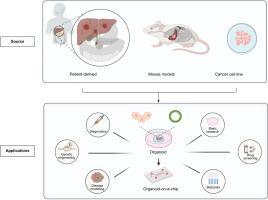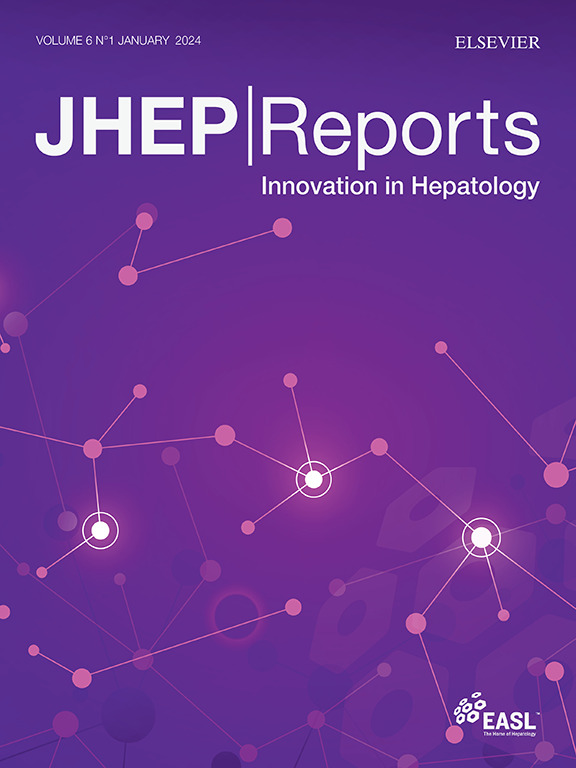Tumor organoids for primary liver cancers: A systematic review of current applications in diagnostics, disease modeling, and drug screening
IF 9.5
1区 医学
Q1 GASTROENTEROLOGY & HEPATOLOGY
引用次数: 0
Abstract
Background & Aims
Liver cancer-related deaths are projected to exceed one million annually by 2030. Existing therapies have significant limitations, including severe side effects and inconsistent efficacy. Innovative therapeutic approaches to address primary liver cancer (PLC) have led to the ongoing development of tumor-derived organoids. These are sophisticated three-dimensional structures capable of mimicking native tissue architecture and function in vitro, improving our ability to model in vivo homeostasis and disease.
Methods
This systematic review consolidates known literature on human and mouse liver organoids across all PLC subtypes, emphasizing diagnostic precision, disease modeling, and drug screening capabilities.
Results
Across all 39 included studies, organoids were most frequently patient-derived, closely followed by cancer cell line-derived. The literature concentrated on hepatocellular carcinoma and intrahepatic cholangiocarcinoma, while exploration of other subtypes was limited. These studies demonstrate a valuable role for PLC organoid cultures in biomarker discovery, disease modeling, and therapeutic exploration.
Conclusions
Encouraging advances such as organoid-on-a-chip and co-culturing systems hold promise for advancing treatment regimens for PLC. Standardizing in vitro protocols is crucial to integrate research breakthroughs into practical treatment strategies for PLC.
Impact and implications:
This study provides an overview of the current understanding of tumor-derived organoids in primary liver cancers, emphasizing their potential in diagnostics, disease modeling, and drug screening. The scientific foundation rests on the organoids' ability to replicate the tumor microenvironment and genetic landscape, opening new avenues for personalized therapies. These insights are crucial for both researchers and clinicians, as patient-derived organoids can help identify biomarkers and therapeutic targets. Physicians and policymakers can harness these advances to drive progress in precision medicine, while recognizing the challenges involved in standardizing organoid models for clinical implementation.

原发性肝癌的肿瘤组织实体:当前诊断、疾病建模和药物筛选应用的系统回顾
背景& 目的预计到 2030 年,每年因肝癌死亡的人数将超过一百万。现有疗法存在严重的局限性,包括严重的副作用和不一致的疗效。针对原发性肝癌(PLC)的创新治疗方法导致了肿瘤衍生有机体的不断发展。这是一种复杂的三维结构,能够在体外模拟原生组织的结构和功能,提高了我们模拟体内平衡和疾病的能力。方法本系统综述整合了所有原发性肝癌亚型中已知的人和小鼠肝脏组织器官的文献,强调诊断的精确性、疾病建模和药物筛选能力。文献主要集中于肝细胞癌和肝内胆管癌,而对其他亚型的探讨则很有限。这些研究表明,PLC类器官培养物在生物标记物发现、疾病建模和治疗探索方面具有重要作用。影响和意义:本研究概述了目前对原发性肝癌中肿瘤衍生类器官的认识,强调了它们在诊断、疾病建模和药物筛选方面的潜力。科学基础在于器官组织复制肿瘤微环境和遗传景观的能力,为个性化疗法开辟了新途径。这些见解对研究人员和临床医生都至关重要,因为源自患者的器官组织有助于确定生物标志物和治疗靶点。医生和政策制定者可以利用这些进步推动精准医学的发展,同时也要认识到在临床应用中标准化类器官模型所面临的挑战。
本文章由计算机程序翻译,如有差异,请以英文原文为准。
求助全文
约1分钟内获得全文
求助全文
来源期刊

JHEP Reports
GASTROENTEROLOGY & HEPATOLOGY-
CiteScore
12.40
自引率
2.40%
发文量
161
审稿时长
36 days
期刊介绍:
JHEP Reports is an open access journal that is affiliated with the European Association for the Study of the Liver (EASL). It serves as a companion journal to the highly respected Journal of Hepatology.
The primary objective of JHEP Reports is to publish original papers and reviews that contribute to the advancement of knowledge in the field of liver diseases. The journal covers a wide range of topics, including basic, translational, and clinical research. It also focuses on global issues in hepatology, with particular emphasis on areas such as clinical trials, novel diagnostics, precision medicine and therapeutics, cancer research, cellular and molecular studies, artificial intelligence, microbiome research, epidemiology, and cutting-edge technologies.
In summary, JHEP Reports is dedicated to promoting scientific discoveries and innovations in liver diseases through the publication of high-quality research papers and reviews covering various aspects of hepatology.
 求助内容:
求助内容: 应助结果提醒方式:
应助结果提醒方式:


